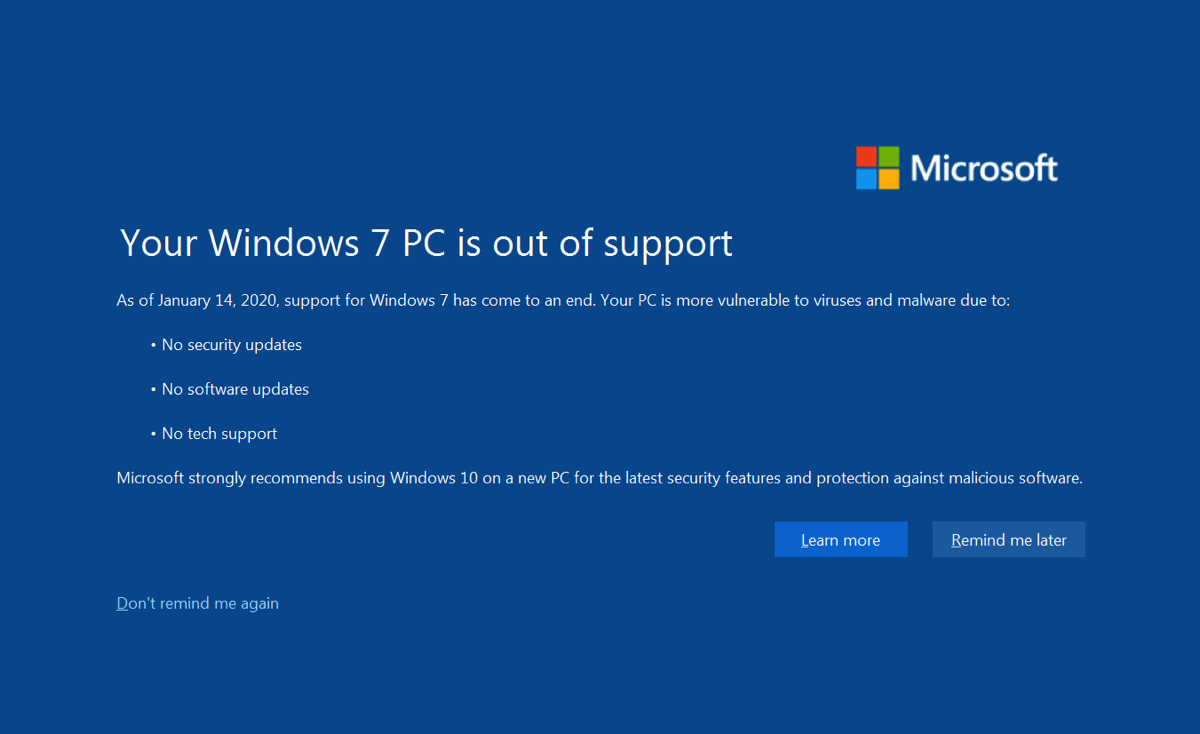
Get in touch with us!
Microsoft Has Announced the
Official "End of Life" for Windows 7
If you are using Windows 7 computers, you have probably seen messages displayed informing you that Windows 7 has reach "end of life". Microsoft has discontinued all support for Windows 7 as of January 2020.

What does this mean?
Well, first of all, Windows 7 isn't going to stop working. But reaching this stage has a few important ramifications you might want to consider.
There will be no more Windows updates. While most of us hate our computers constantly updating, this performs a critical service. Windows Update keeps computers safe from vulnerabilities and keeps the operating system up to date with the current state of technology.
There will be no more security updates. If a critical vulnerability is discovered somewhere along the way, Microsoft won't fix it. If you are using Windows Defender, Microsoft is not going to provide updates anymore. This can open you up to all kinds of dangers. Malicious actors are constantly upping their game, and now that Windows 7 is essentially "wide open", expect these machines to become targets for hackers everywhere.
There will be no more support. Microsoft will not answer any more tech support requests for Windows 7.
How does this affect CYBERsitter?
We will continue to support Windows 7. CYBERsitter has worked perfectly for the entire life of Windows 7 and we will not stop supporting it or developing for it. In fact, many of our computers still use Windows 7. We just like it better than Windows 10 for many purposes.
What should you do?
For the vast majority of our users, we recommend updating to Windows 10. If you are a computer professional and know how to keep your computer safe and secure, then you probably don't need our advice. If not, you need to be aware that the bad guys are trying hard to get into your computer every day. Upgrading to Windows 10 would mean continued updates to help keep your computer safe. That's important!
If you decide to update to Windows 10:
If you are using CYBERsitter 2019 or 2020, it fully supports all releases of Windows 10.
If you are using CYBERsitter 2018, you may experience some problems with the latest versions of Windows 10, however most users report that things work properly.
If you are using CYBERsitter 11 or older, none of these versions work with Windows 10. You will need to upgrade to CYBERsitter 2019.
We recommend uninstalling all versions of CYBERsitter prior to performing an update to Windows 10, then reinstalling when the upgrade is complete. We install different files depending on the Windows version, so a new install is necessary.
Remember: To uninstall CYBERsitter successfully, it must be done by opening up the CYBERsitter control panel, select the Options tab, and clicking on the "Uninstall" button.
27LABS, LLC Terms of Service
27LABS, LLC Privacy Notice